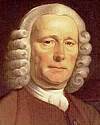
On 24 Mar 1693, John Harrison was born, the English clockmaker who devoted most of his life to building more and more accurate marine chronometers. Obviously, the best pendulum clock on land would be worthless on a sailing vessel, constantly tossed by the sea. Yet it was only by knowing time accurately that the latitude of a ship’s location could be properly determined.
Just as in modern times, the invention of the GPS was a jaw-dropping advance for navigation, so in Harrison’s time, it was an accurate marine chronometer that was the holy grail.
Parliament offered a huge reward to the inventor who solved the inherent problems in chronometer design. (Those included, for example, temperature compensation.) Many others tried; all failed. Harrison's dogged determination through four decades finally paid off, with the refinement of his Longitude Watch.
This chapter, John Harrison and the Longitude Watch from John Timbs’ Stories of Inventors (1860) begins by answering the question you may have been thinking: so just how do you determine latitude with a clock?

On 24 Mar 1693, John Harrison was born, who created a marine chronometer capable of keeping time with such accuracy that navigators could reliably determine their longitude, even after many months at sea. Today's book pick is: Longitude: The True Story of a Lone Genius Who Solved the Greatest Scientific Problem of His Time, by Dava Sobel (also known for her book Galileo's Daughter). Longitude was on the best-seller list eight weeks, and deservedly so. This highly-readable, engrossing book provides both a vibrant story of the pains of solving an important problem, and a biography of the man who solved it.
This fascinating piece of history can also be seen dramatized on these DVDs (which your Webmaster has seen and enthusiastically recommends):
It is available from Amazon, typically about New from $9.50. Used from $0.24. (As of earlier time of writing - subject to change.)

Webmaster enthusiastically recommends a top notch dramatization available on DVD of the life and struggles of John Harrison, clock maker of the 18th century (played by Michael Gambon), seamlessly interwoven with the similarly intense exertion of Rupert Gould, a horologist restoring the neglected Harrison clock in the 20th century (played by Jeremy Irons). The history of the years of work that went into the original creation of such a device is spellbinding. The politics of the Admiralty interposed further nearly insurmountable obstacles builds tension as the story unfolds. The production values of this film are excellent, the research highly accurate, and the performances of the British actors are impeccable. Today's book pick is: Longitude, by ITV and A&E, based on the book by Dava Sobel. First aired as a TV mini-series, this docu-drama pays due homage to the genius of the inventor, and the passion of the restorer, both linked through centuries by the clock two centuries, and now both are presented to be known and remembered by the viewers.
It is available from Amazon, typically about New from $39.92. Used from $8.05. (As of earlier time of writing - subject to change.)

Here is another choice of videos on DVD about John Harrison’s epic effort to solve the problem of measuring longitude at sea in the 18th century. His story, as he toiled for decades, is told in a TV movie docu-drama aired as a Horizon episode on BBC TV in Britain, and also presented as a NOVA episode by WBGH on PBS in the U.S. Today's book pick is: NOVA: Lost at Sea - The Search for Longitude, by Patrick Malahide as John Harrison and narrated by Richard Dreyfuss.
It is available from Amazon, typically about New from $13.31. Used from $8.90. (As of earlier time of writing - subject to change.)
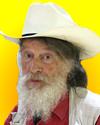 | I want to find a voracious, small-minded predator and name it after the IRS. |
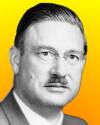 | If a problem is clearly stated, it has no further interest to the physicist. |
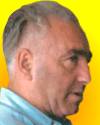 | Scientific theory is a contrived foothold in the chaos of living phenomena. |
| Before you look at today's web page, see if you can answer some of these questions about the events that happened on this day. Some of the names are very familiar. Others will likely stump you. Tickle your curiosity with these questions, then check your answers on today's web page. | |
| Births | |
 | Four Nobel Prize winners share 24 Mar as their birthday. Joseph H. Taylor (born 1941), John Cowdery Kendrew (1917), Adolf Butenandt (1903), and Peter Debye (1884). In different years, three won the Nobel Prize for Chemistry, and the fourth was awarded a Nobel Prize for Physics. Which scientist won the Nobel Prize for Physics? |
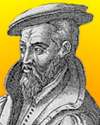 | Georgius Agricola, born 24 Mar 1494, was a German scholar and scientist known as “the father of mineralogy,” who made fundamental contributions to mining geology and metallurgy, mineralogy, structural geology, and paleontology. He was among the first to found a natural science upon observation. He may have coined the word “petroleum.” What is the meaning of the two Latin words that form the word “petroleum?” |
| Deaths | |
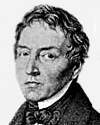 | In 1849, a German chemist died, who remains noted for identifying “triads” of elements. He noticed a pattern among three elements with similar chemical properties, chlorine, bromine, and iodine—that the atomic weight of Br was the arithmetic mean of the atomic weights of Cl and I; and the properties of the three elements varied in an orderly manner, from Cl to Br to I. He found two other such triads—calcium, strontium, barium; and sulfur, selenium, tellurium. Can you name this chemist? |
| Events | |
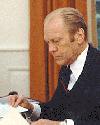 | On 24 Mar 1976, President Ford initiated a national program to give the entire U.S. population inoculations against a strain of influenza virus that experts had identified as a possible “killer flu.” It was first identified at Fort Dix, N.J., and concern that the virus could possibly be an emergency on the scale of the 1918 Spanish flu resulted in an unprecedented nationwide vaccination effort. By what name was this flu virus known? |
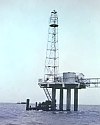 | On Mar 24 of a certain year, the first U.S. seagoing oil drill rig (for drilling in over 100 feet of water) was placed in service by the U.S. company C.G. Glasscock Drilling Co. In which decade was this oil rig placed in service? |
Fast answers for the previous newsletter for March 23: V-2 ballistic missile • volcanic action • vanadium • the decade including the year 1982 • Gemini III, nicknamed the “Molly Brown”.
 If you enjoy this newsletter, the website, or wish to offer encouragement or ideas, please send feedback by using your mail reader Reply button.
If you enjoy this newsletter, the website, or wish to offer encouragement or ideas, please send feedback by using your mail reader Reply button. Your click on a Facebook, StumbleUpon, or other social button on the site webpages is also a welcome sign of appreciation. Thank you for using them.
© This newsletter is copyright 2020 by todayinsci.com. Please respect the Webmaster's wishes and do not put copies online of the Newsletter — or any Today in Science History webpage. (If you already have done so, please remove them. Thank you.) Offline use in education is encouraged such as a printout on a bulletin board, or projected for classroom viewing. Online, descriptive links to our pages are welcomed, as these will provide a reader with the most recent revisions, additions and/or corrections of a webpage. For any other copyright questions, please contact the Webmaster by using your mail reader Reply button.
--
If you do not want to receive any more newsletters, Unsubscribe
To update your preferences and to unsubscribe visit this link
Executive Real Estate Business Class
-
"It was like a man with wings. It wasn't like anything you'd see on TV or in a monster movie." ...
About the publisher
Search This Blog
Blog Archive
-
▼
2021
(585)
-
▼
March
(44)
- Newsletter for Wednesday 31 March.
- On This Day for March 30 - Failed assassination at...
- Newsletter for Tuesday 30 March.
- On This Day for March 29 - Dominion of Canada crea...
- Newsletter for Monday 29 March.
- The real history behind new film 'Ammonite', starr...
- On This Day for March 28 - Constantinople renamed ...
- Newsletter for Sunday 28 March.
- On This Day for March 27 - Cleopatra reinstated as...
- Newsletter for Saturday 27 March.
- Catch a break with spring savings
- On This Day for March 26 - Signing of Israel-Egypt...
- Newsletter for Friday 26 March.
- On This Day for March 25 - Robert the Bruce crowne...
- On This Day for March 24 - Exxon Valdez Alaskan oi...
- Newsletter for Wednesday 24 March.
- On This Day for March 23 - Lewis and Clark's retur...
- Newsletter for Tuesday 23 March.
- On This Day for March 22 - Murder at Jamestown, Ya...
- Newsletter for Monday 22 March.
- Roman medicine: 6 ways people stayed healthy
- On This Day for March 21 - Closing of Alcatraz pri...
- Newsletter for Sunday 21 March.
- On This Day for March 20 - AUM subway attack, Maud...
- Newsletter for Saturday 20 March.
- On This Day for March 19 - Iraq War begins, Glenn ...
- Newsletter for Friday 19 March.
- On This Day for March 18 - Election of Chen Shui-b...
- On This Day for March 17 - Vote to end apartheid, ...
- On This Day for March 16 - My Lai Massacre, Caroli...
- On This Day for March 15 - Julius Caesar assassina...
- On This Day for March 14 - Reelection of Vladimir ...
- Newsletter for Sunday 14 March.
- On This Day for March 13 - The planet Uranus disco...
- Newsletter for Saturday 13 March.
- Newsletter for Friday 12 March.
- Newsletter for Thursday 11 March.
- Newsletter for Wednesday 10 March.
- On This Day for March 9 - Battle of the Monitor an...
- Newsletter for Monday 8 March.
- Newsletter for Sunday 7 March.
- On This Day for March 6 - King Tut's tomb opened, ...
- On This Day for March 2 - Moroccan independence de...
- On This Day for March 1 - Establishment of Yellows...
-
▼
March
(44)
-
Blogroll
-
About
HistoryFact










0 comments:
Post a Comment